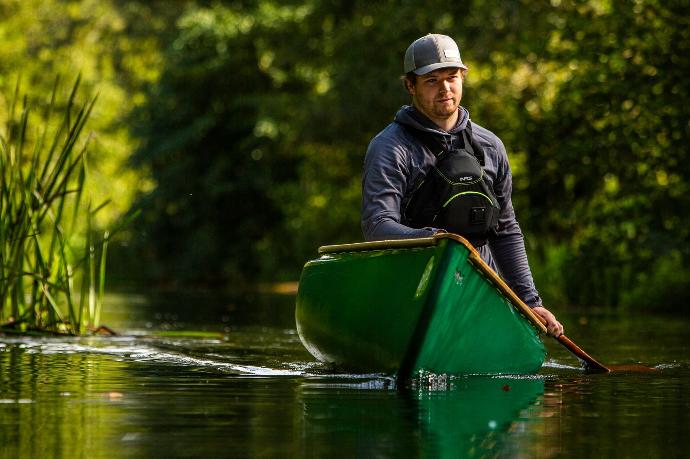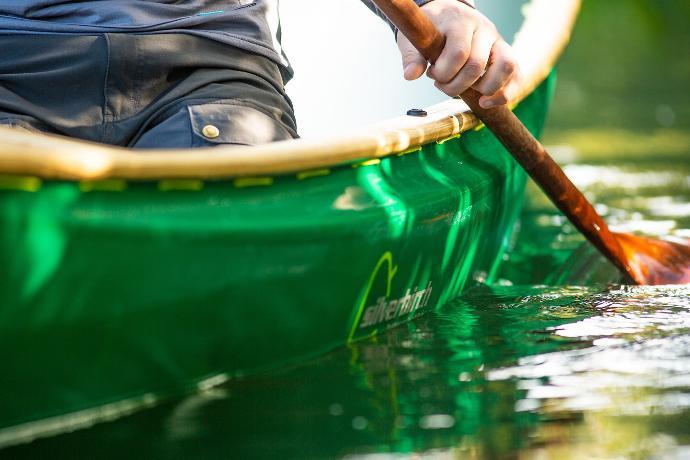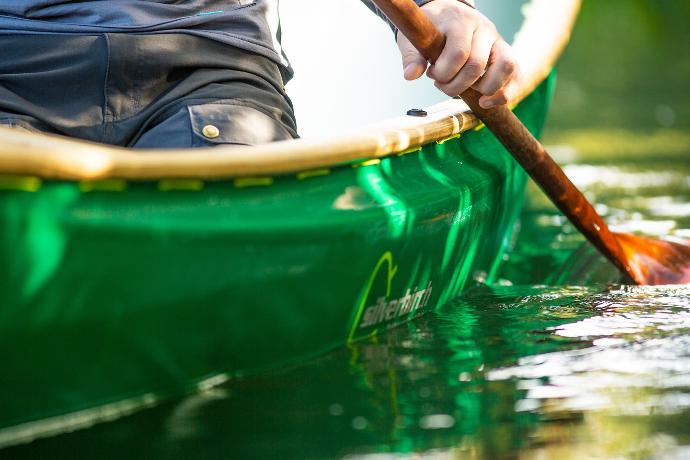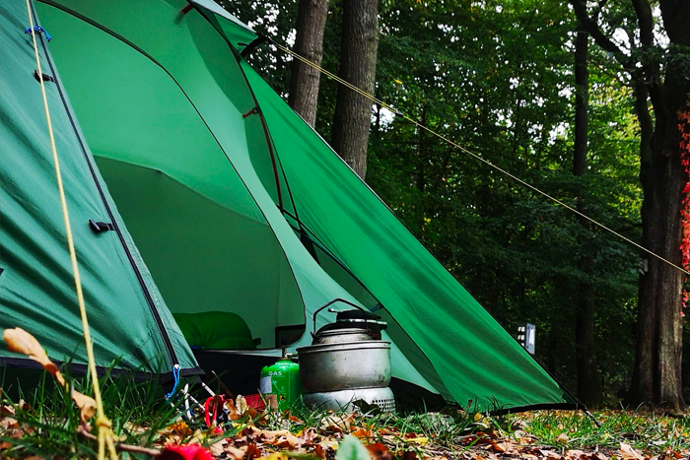With appropriate skills and favourable conditions, pretty much any canoe loading might be considered responsible… but assessment in a specific situation is the only meaningful basis for saying what should be considered acceptable
WHAT SIZE CANOE IS RIGHT FOR ME?
A traditional canoe that's a little too small can be a bit frustrating or limiting. We might just about manage in that small canoe, but everything might be just that little bit harder work or less comfortable than it needs to be.
Of course, a traditional canoe that's slightly too big can be just as frustrating or limiting as one that's slightly too small, especially in any sort of breeze.
If our needs are going to be widely different over the course of a year, we may consider choosing a canoe that is sometimes going to be a LOT too big or too small compared with what we need.

Up to a point, canoe-design can allow for varied loading (see below). Additional expertise and experience can also allow us to make safe and effective use of a canoe that others might only find manageable with "optimal" loading, and in some contexts, we may be able to use the same canoe with radically different loading.
If we need to use one canoe in many ways, what counts as an appropriate capacity will depend on many things, ranging from where and when we intend to be using our canoe to our experience and expertise. Appropriate loading may extend a long way beyond optimal loading.

DESIGN CAPACITY OF AN OPEN CANOE
All canoes will displace water in proportion to their all-up weight: that's the weight of the canoe plus the weight of people and kit. If our canoe takes on water, that is added to our all-up weight: our canoe will displace more water.
Canoeists may trim slightly "bow light" or "bow down" for specific conditions, but as a rule, canoes are designed to be trimmed flat on the water.
As a rule, well-designed solo canoes work best at between the 50mm (2") waterline and the 100mm (4") waterline. Anything less is skating on the surface (and not engaging the stems), but beyond the 4" waterline, the stems become harder to manage from a central seating position.
For tandem canoes, designed to be operated by one canoeist in the bow and another in the stern, sitting deeper generally makes more sense. The 75mm (3") waterline ensures more hull is engaged with the water. At the other extreme, when we are able to apply strokes towards the ends of the canoe (rather than from the centre), we can generally handle a canoe loaded to the 125mm (5") waterline.
All hull designs respond differently to increased or reduced loading. Skilled canoeists can often adapt to changes in how hulls handle, and may operate safely and effectively at loadings well beyond what is "optimal" for a given canoe.
DESIGNING FOR A VARIED LOAD
Our normal loading of our canoe might mean we find our canoe reassuringly predictable much of the time, but changing our loading may mean our canoe becomes worryingly more difficult to handle in adverse conditions.
The handling-implications of additional loading tend to be highest in canoes which may initially feel most secure. For example, in flat-bottomed canoes with a maximum beam which becomes submerged as the canoe is loaded.
If our canoe is highly rockered, with limited volume in the ends, it may be trim-sensitive. Distributing additional load unevenly might not work well.

In some environments, where a canoe is loaded (how far fore or aft) may matter more than total loading. For example, larger paddlers on canoe seats set close to the stems (ends) of a canoe may lead to uncomfortable pitching in a canoe that the same paddlers could handle in comfort with seats which are closer together, and though perhaps more efficient in most conditions, the first configuration may prove problematic in wind-blown or standing waves.
Canoes modelled on Chestnut Prospector designs draw on varied traditions of boats optimised to handle wide variations in loading. The same indifference to loading can also be achieved in other hull designs, including with a more V-shaped hull.

SAFETY CONSIDERATIONS
Context, experience and expertise are the over-riding factors contributing to safety in canoeing. If the context is forgiving, pretty much any level of experience and expertise may suffice. If not, little else will compensate.
If we have a choice between loading a single canoe with two or three paddlers, or splitting those paddlers between two canoes, we might assume two canoes is safer. Overloading is certainly less likely, and rescues become an option.
Of course, canoeists in under-laden canoe may struggle to make headway in a breeze, and a wind-affected group might drift into difficulties which could have been avoided with all concerned powering fewer, more heavily-laden canoes.
A family of four with two adults and two very young children could be safer on a river in a large tandem canoe with one parent each end as a tandem canoe is more easily managed with a strong paddler at each end. Two years later, that same family might be safer with one parent and one child in each canoe, and two years after that, the same family might prefer to have the two adults in one boat with two highly-skilled youngsters in the other.
Sometimes, we might go some places with lightly laden canoes that we might not with heavily laden canoes. At other times, we might find the situation is reversed. Neither option is "better" for all situations, and decisions should reflect experience and expertise.
WHAT ABOUT INDUSTRY CAPACITY?
Every once in a while, we see phrases such as "A vessel must not carry any number of persons or overall loading in excess of that recommended by the manufacturer" - a framing which comes from the world of larger craft.
In the past, some North American manufacturers have attached an "industry capacity" figure to canoes. Canoes loaded to their "industry capacity" will have 150mm (6") of freeboard remaining - which is way beyond "optimal" loading.
A 4.88m (16') canoe might be overloaded with three people one day, then be used in a perfectly responsible manner with twelve or more the next day.

In the right hands and setting, a well maintained canoe can be treated as incidental to the safety of its occupants, all of whom can be treated as wild-swimmers who choose to take advantage of a floating platform. This could be the case on a summer day at the beach, or even on an autumnal day on the Norfolk Broads.
No manufacturer, anywhere, can offer a credible maximum personal-capacity rating for a canoe in a way that could be treated as meaningful for managing risk. Anyone asking for such a figure should be directed towards a technical advisor who understands risk management.


The Capacity of a Traditional Canoe